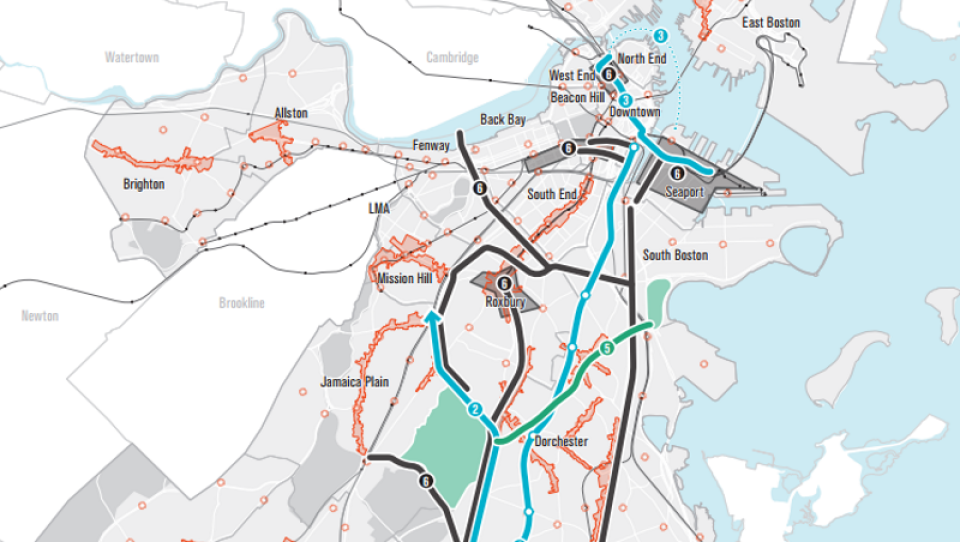Boston Mayor Marty Walsh Tuesday released a comprehensive transportation investment plan for the city, the culmination of two years of research that will guide major transportation projects for years to come.
The 58 individual projects proposed in the "Go Boston 2030" plan run the gamut from administrative fixes to incredibly ambitious visions for overhauling how Bostonians get around, like building light rail into the Seaport and extending the Orange Line to Roslindale.
At a rollout event for the plan, Walsh said the proposal will address safety, mobility and equity by linking the city's residents with areas with job development. The mayor says the plan would reshape the city's entire transportation system instead of focusing on a limited number of short-term projects.
"It's not just simply, 'okay, we need to fix a road here, let's invest in it,' it's about 'how do we fix the system,'" Walsh said.
The plan sets out proposals for establishing bicycle-friendly main streets districts, improvements to the MBTA's Fairmount Line, better use of rapid bus transit, quicker access between Boston's residential areas and job centers and the renovation of Columbia Road into a new greenway park corridor.
The city says over 8,500 ideas were submitted and culled after extensive review and analysis into the 58 plans and policy changes.
Paying for the proposals and bridging vision and reality will be a tougher task for the Walsh administration. The city has leeway within its $700 million five-year capital plan to fund some of the projects itself. Others will need buy-in from state or federal authorities.
State Transportation Secretary Stephanie Pollack was enthusiastic about the plan, saying that it puts the city in a good position to deal with the state and US government to negotiate funding through major grants or tax funds.
"If you're going to accomplish things, you have to set priorities because you can't do everything all at once all the time and this document lays out a clear set of priorities for the city of Boston and that puts them in a great position to realize them," Pollack told WGBH News.
Walsh said the price of all the projects would change over time so he couldn't put a dollar figure on the overall blueprint.
"It's not just about costing taxpayers, it's about using taxpayers money more efficiently and smarter," Walsh said, "We'll be able to tell a story to the federal government that we actually are moving forward with a plan."
Asked if the 2018 state ballot question that would create an excise tax on incomes over $1 million a year would be a windfall for projects like the one's in his plan, Walsh said he wasn't sure. The mayor said he hasn't taken a position on the additional income tax, but supports revisiting raising the state's gas tax to help pay for transportation projects.
Walsh described an incremental process of getting the individual projects through the pipeline, saying that the city will "piece it together as best we can."
The extensive plan, a slick presentation of what the future could hold, reaches almost every corner of Boston. It places an emphasis on delivering residents of traditionally poorly served areas like Dorchester, Roxbury and Mattapan to areas booming with jobs, which could benefit Walsh in his reelection year.
Livable Streets executive director Stacy Thompson said her organization, which advocates for street planning to benefit the community, was among several that worked with City Hall to craft the plan and wants to see Walsh follow through on the proposals.
"We want to see more than just talk of vision. This year and the next year and the following year, we're heavily advocating for an increase in transportation funding from the city level and we hope to see that from the city council and the mayor and others," Thompson said.
"Without that increase in resources and without that commitment, we will have done this for nothing," Thompson said.





